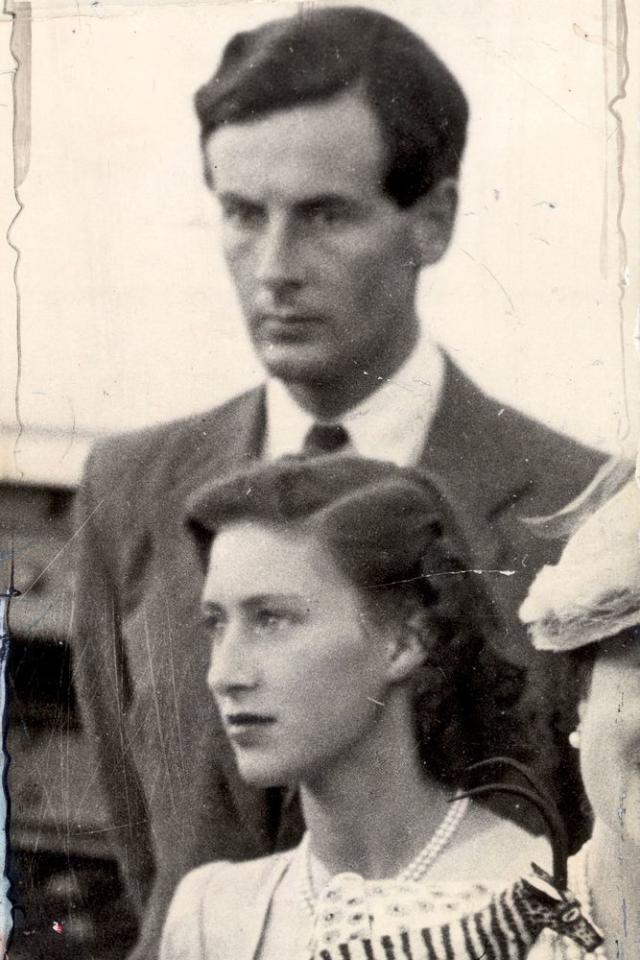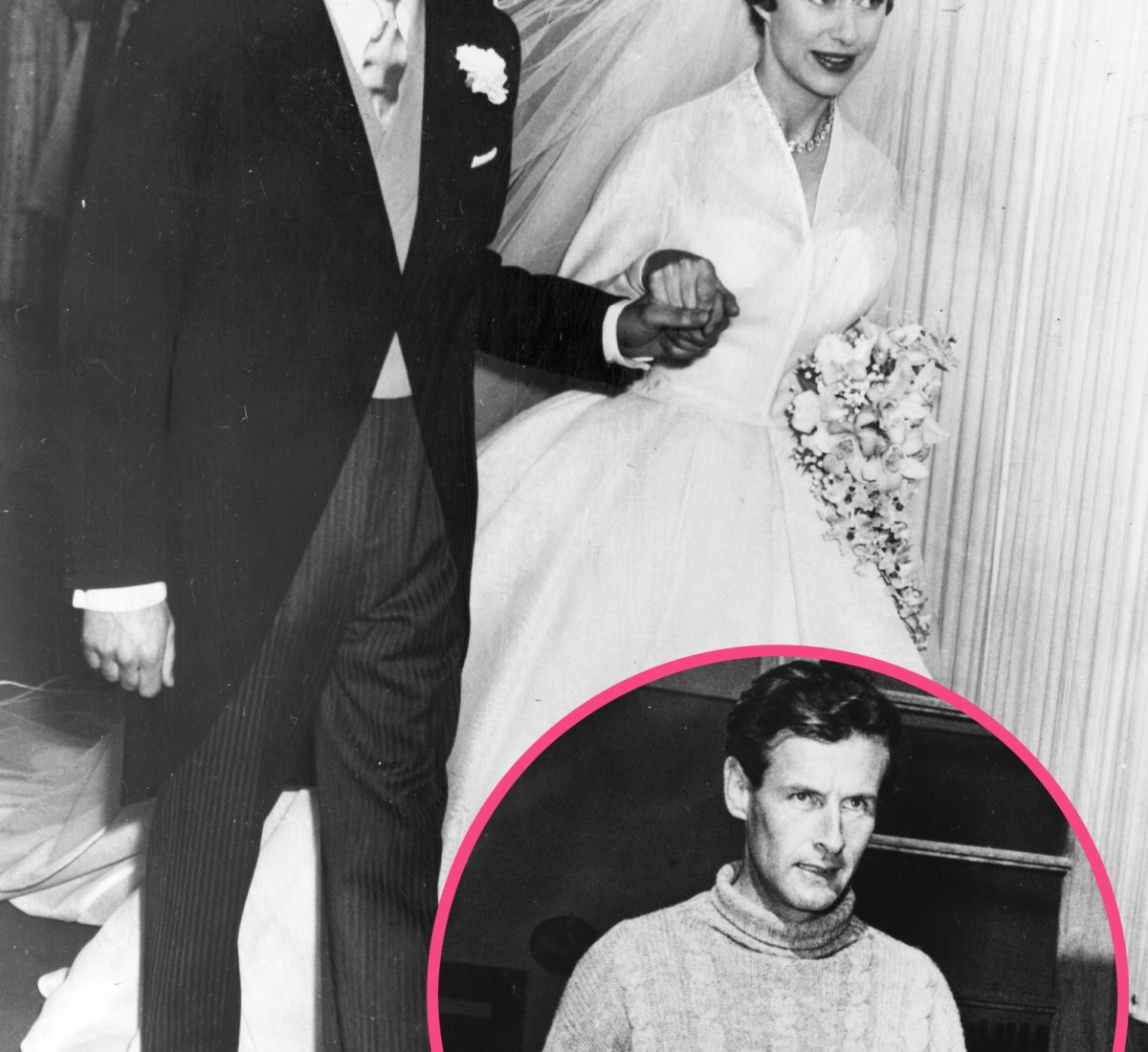Margaret And Peter Townsend: A Royal Love Story That Captured Hearts
The love story between Margaret, Princess of England, and Peter Townsend is one of the most iconic royal romances in history. Their relationship transcended class boundaries and challenged societal norms of the mid-20th century. This article delves into their story, exploring the challenges they faced and the lasting impact of their relationship on modern perceptions of royal romance.
Princess Margaret's relationship with Peter Townsend became a global sensation in the 1950s, captivating audiences worldwide. The romance unfolded during a time when royal marriages were expected to adhere to strict conventions, making their story all the more compelling. As we explore their journey, we uncover the complexities of love, duty, and the pressures of royal life.
Through historical context, personal insights, and expert analysis, this article provides a comprehensive look at the relationship between Margaret and Peter Townsend. Whether you're a history enthusiast or simply fascinated by royal dramas, this story offers valuable lessons about love and perseverance in the face of adversity.
Read also:Exploring Goldsboro Daily News Goldsboro Nc Your Ultimate Local Guide
Table of Contents
- Biography of Margaret and Peter Townsend
- Early Life and Background
- The Romantic Beginnings
- Challenges Faced by the Couple
- Impact on the Media and Public
- Royal Family's Reaction
- Religious Barriers and Controversies
- Public Support and Opposition
- Legacy and Lasting Influence
- Modern Perspective on Their Story
Biography of Margaret and Peter Townsend
Princess Margaret Rose, the younger sister of Queen Elizabeth II, was born on August 21, 1930. Her life was destined to be in the public eye from the moment she entered the world. Peter Townsend, a decorated RAF officer and equerry to King George VI, was born on June 18, 1914. Below is a brief overview of their personal details:
Personal Data
| Detail | Princess Margaret | Peter Townsend |
|---|---|---|
| Full Name | Margaret Rose | Group Captain Peter Wilder Townsend |
| Date of Birth | August 21, 1930 | June 18, 1914 |
| Place of Birth | Glamis Castle, Scotland | London, England |
| Occupation | Princess of the United Kingdom | RAF Officer, Equerry |
Early Life and Background
Margaret grew up in the shadow of her sister, Elizabeth, who was destined to become queen. Despite this, she carved out her own identity as a spirited and independent woman. Peter Townsend, on the other hand, rose through the ranks of the RAF and became a trusted advisor to the royal family. Their paths crossed during Townsend's tenure as equerry to King George VI, setting the stage for their legendary romance.
Formative Years
- Margaret's childhood was marked by royal duties and the pressures of being a member of the British monarchy.
- Townsend's military career provided him with a strong sense of discipline and responsibility, qualities that would later define his relationship with Margaret.
The Romantic Beginnings
Their romance began discreetly, with frequent meetings at Buckingham Palace. Townsend's charm and intelligence captivated Margaret, while her wit and elegance drew him in. By the early 1950s, their relationship had become the subject of intense speculation in the press.
Historians note that their connection was not just romantic but also intellectual, as they shared a deep appreciation for art, culture, and literature. This bond strengthened their resolve to pursue a future together, despite the obstacles ahead.
Challenges Faced by the Couple
The primary challenge for Margaret and Peter Townsend was the difference in their social statuses. As a member of the royal family, Margaret's marriage choices were subject to parliamentary approval. Additionally, Townsend's divorce from his first wife added another layer of complexity, as the Church of England did not recognize divorce at the time.
Key Obstacles
- Social Class Differences: Townsend's status as a commoner raised eyebrows in royal circles.
- Divorce Controversy: The Church of England's stance on divorce created significant religious barriers.
- Public Opinion: While some supported their union, others viewed it as inappropriate for a princess to marry a divorced man.
Impact on the Media and Public
The media coverage of Margaret and Peter Townsend's relationship was unprecedented. Newspapers around the world followed their story closely, with headlines often focusing on the dramatic aspects of their romance. Public opinion was divided, with many people sympathizing with the couple while others criticized their defiance of tradition.
Read also:Aminah Nieves Nationality Unveiling The Roots Of A Rising Star
Media Representation
According to a study published in the Journal of Media History, the media's portrayal of their relationship evolved over time, reflecting changing societal attitudes toward royal marriages. Initially, the press was skeptical, but as the story unfolded, there was a gradual shift toward more sympathetic coverage.
Royal Family's Reaction
The royal family's response to Margaret and Peter Townsend's relationship was cautious. Queen Elizabeth II, in particular, faced the difficult task of balancing her sister's happiness with her duties as monarch. Ultimately, the queen advised Margaret to reconsider the marriage, citing the potential consequences for the monarchy.
Queen's Perspective
In a letter dated November 1955, Queen Elizabeth expressed her concerns about the implications of Margaret's marriage to Townsend. She emphasized the importance of maintaining public trust in the monarchy and the need for Margaret to prioritize her royal responsibilities.
Religious Barriers and Controversies
Religious barriers played a significant role in the couple's decision not to proceed with their marriage. The Church of England's refusal to sanction the union was a major obstacle, as it would have required Margaret to renounce her royal titles and privileges. This dilemma highlighted the tension between personal desires and institutional expectations.
Religious Context
At the time, the Church of England was a powerful institution, and its stance on divorce was firmly rooted in tradition. Experts argue that this issue was not unique to Margaret and Townsend, as similar challenges faced other royal couples throughout history.
Public Support and Opposition
Public opinion on Margaret and Peter Townsend's relationship was mixed. While many admired their courage in pursuing love, others believed that the monarchy should remain above personal affairs. Surveys conducted during the 1950s revealed that approximately 40% of the British population supported their union, while the remaining 60% opposed it.
Public Sentiment
- Supporters praised the couple for their commitment to each other, viewing their relationship as a symbol of modern love.
- Opponents argued that the monarchy should adhere to traditional values, fearing that a marriage to a divorced man would undermine its authority.
Legacy and Lasting Influence
Although Margaret and Peter Townsend ultimately did not marry, their story left an indelible mark on the history of the British monarchy. It highlighted the evolving nature of royal relationships and the increasing influence of public opinion on royal decisions.
Historical Impact
According to historian Andrew Roberts, their romance marked a turning point in the way the public perceived royal marriages. It paved the way for future royal couples to challenge traditional norms and pursue relationships based on love rather than duty.
Modern Perspective on Their Story
In today's world, where royal families are more transparent and open about their personal lives, the story of Margaret and Peter Townsend serves as a reminder of the challenges faced by royals in the past. It also underscores the importance of balancing personal happiness with public responsibilities.
Lessons Learned
As we reflect on their story, we can draw valuable lessons about the complexities of love, duty, and societal expectations. Their relationship teaches us that true love often requires sacrifice and compromise, but it can also inspire change and progress.
Kesimpulan
The love story of Margaret and Peter Townsend remains one of the most fascinating chapters in royal history. Despite the challenges they faced, their relationship challenged societal norms and paved the way for future royal couples to pursue love on their own terms. As we look back on their story, we are reminded of the power of love to transcend barriers and inspire change.
We invite you to share your thoughts on this article in the comments section below. Do you believe that their story still resonates with modern audiences? Explore other articles on our site to learn more about the fascinating world of royalty and history.


